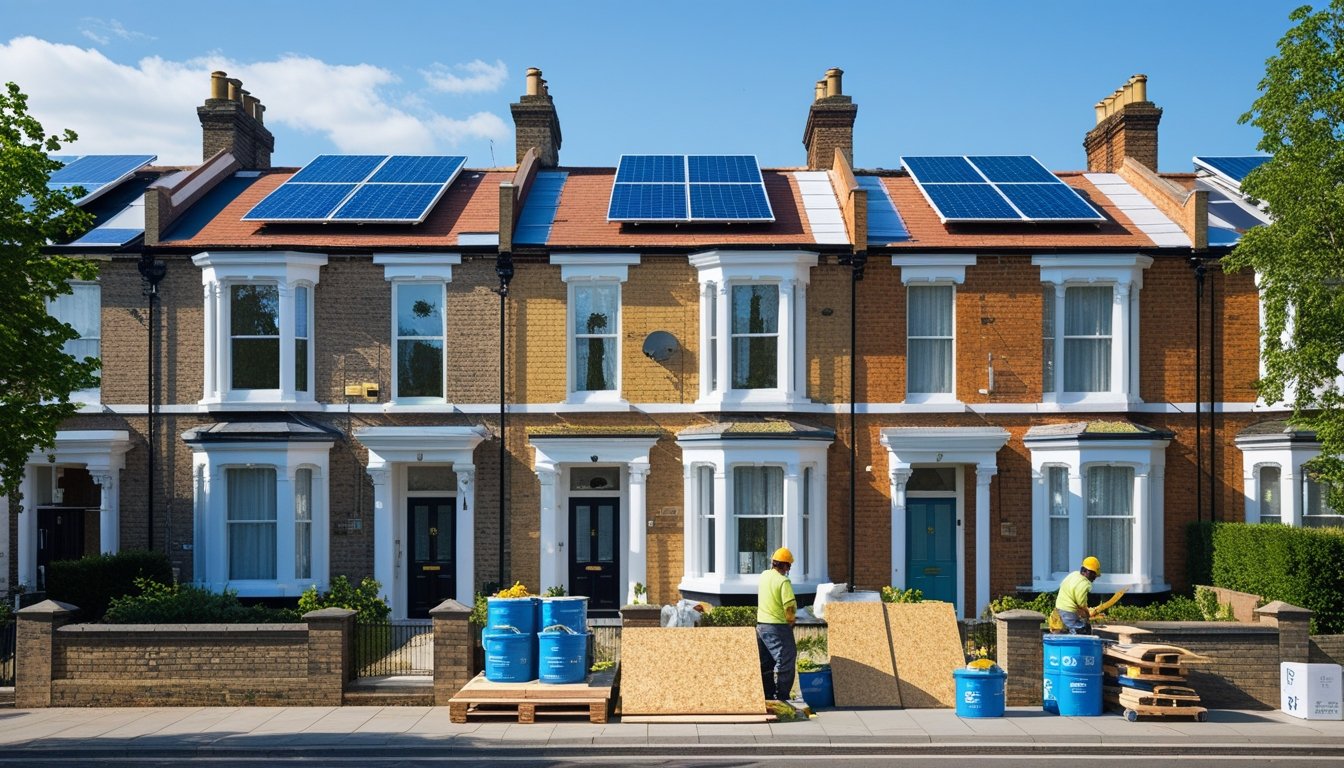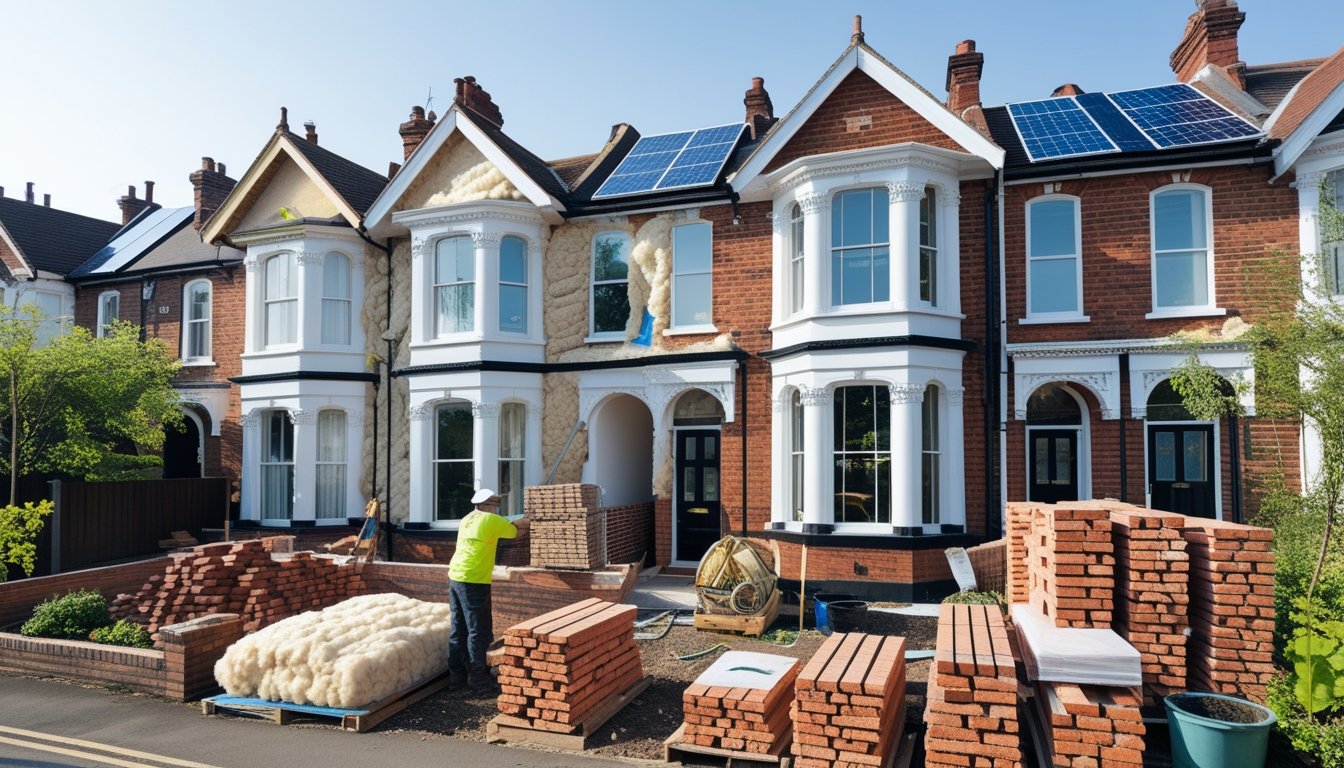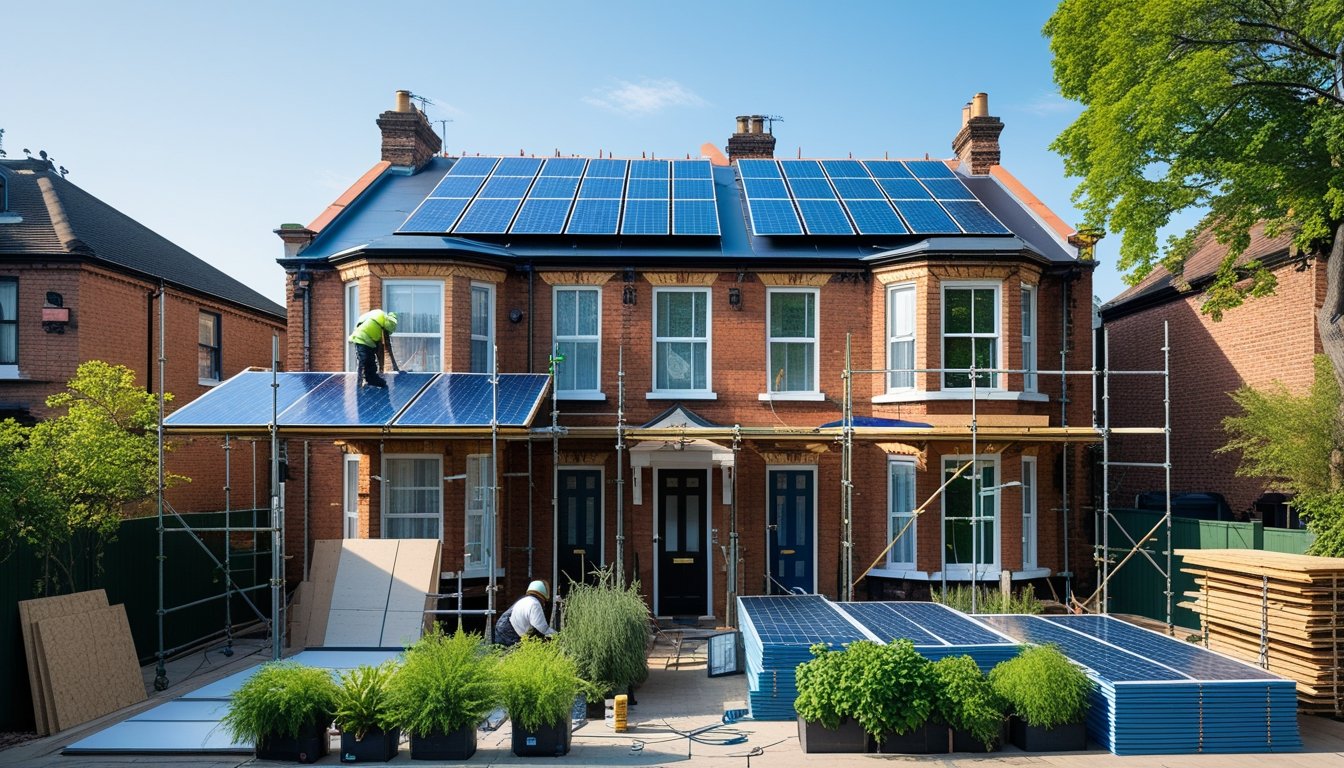Late updated: 20 Jul 2025 15:07
Written by: Daniel Harper
Eco-Friendly Ways To Renovate Victorian Terraced Houses: Sustainable Solutions for a Classic Design
Renovating Victorian terraced houses to make them more eco-friendly presents a unique challenge and an exciting opportunity. These cherished homes, known for their historical charm and architectural beauty, can be transformed into sustainable living spaces that meet modern environmental standards. By embracing retrofitting strategies and incorporating sustainable materials, we can significantly reduce the carbon footprint of these historic homes while preserving their timeless elegance.

Many Victorian terraced houses lack sufficient insulation and have outdated heating systems, making them less energy efficient. To address this, we should consider implementing advanced insulation, energy-efficient windows, and renewable energy sources, such as solar panels. These upgrades not only improve energy efficiency but also enhance the comfort and value of the property.
Passionate homeowners and enthusiasts have shown that it is possible to harmonise the past with the future by integrating eco-friendly solutions into Victorian homes. We invite you to explore the possibilities of these renovations with us, continuing the legacy of these magnificent houses while contributing to a more sustainable environment.
Key Takeaways
- Eco-friendly retrofitting enhances energy efficiency.
- Sustainable materials preserve historical charm.
- Renovations help reduce the carbon footprint.
Eco-Friendly Retrofitting Strategies for Victorian Terraced Houses
Efficiently retrofitting Victorian terraced houses not only enhances energy performance but also aligns with sustainable living practices. By focusing on energy efficiency, innovative energy solutions, and optimised heating systems, we can significantly lower carbon emissions and energy costs.
Improving Energy Efficiency and Insulation
Boosting insulation is a primary concern. Double glazing windows is essential for reducing heat loss. Installing solid wall insulation, either internally or externally, can dramatically improve thermal comfort.
Additionally, enhancing draught-proofing plays a crucial role in retaining warmth. Let’s consider eco-friendly materials like natural fibre insulation, which are both sustainable and effective. They help lower energy consumption, ultimately cutting down on energy bills while reducing the household’s carbon footprint.
Renewable Energy Solutions and Systems
Implementing renewable systems can have a profound impact. Introducing solar panels can harness solar energy effectively, with biomass boilers offering an eco-friendlier alternative to traditional heating systems.
Moreover, heat pumps are a fantastic option, capturing warmth from the ground or air even in cooler temperatures. These systems not only conserve non-renewable resources but also ensure a reduction in carbon emissions. Such innovations require investment but lead to long-term savings and environmental benefits.
Redesigning Heating and Ventilation Approaches
Revising and updating heating and ventilation systems is vital for improving indoor air quality and thermal regulation. Underfloor heating is an efficient method, distributing warmth evenly and using less energy than conventional systems.
We should integrate advanced ventilation systems, such as heat recovery ventilators, which preserve energy while ensuring a fresh air supply. These strategies collectively optimise energy use and promote a more sustainable lifestyle.
Our retrofitting approach ensures that Victorian terraced houses not only preserve their historical charm but also meet modern eco-friendly standards.
Sustainable Materials and Building Techniques

Embracing sustainable materials and building techniques is essential in reducing the carbon footprint of Victorian terraced houses. By incorporating low-carbon and reclaimed materials as well as eco-friendly finishes, we can enhance both the environmental impact and the aesthetic appeal of these historic homes.
Low-Carbon and Reclaimed Materials
Utilising low-carbon and reclaimed materials is imperative for eco-friendly renovations. Reclaimed timber and lime plaster offer excellent options. These materials not only lower carbon emissions but also enhance the home's authenticity.
Reclaimed wood provides robust structural support while preserving resources. Lime plaster is breathable and suits the historical context of Victorian homes. Furthermore, low-carbon concrete can replace traditional mixes, significantly reducing carbon footprint. Being mindful of material origins and sustainability helps us conserve the planet's resources.
Eco-Friendly Finishes and Paints
When selecting finishes and paints, opting for eco-friendly versions is crucial. Using non-toxic, water-based paints reduces harmful emissions, safeguarding indoor air quality and our health. These paints come in an array of colours and finishes, allowing us to maintain the classic charm of Victorian aesthetics.
Natural oils and waxes offer excellent alternatives for wood finishes, providing a healthy, long-lasting sheen. Clay-based plasters and lime washes also contribute to healthy interiors. Implementing eco-friendly finishes ensures we preserve the home's beauty while prioritising sustainability.
Frequently Asked Questions

In this section, we address some common concerns about sustainably renovating Victorian terraced houses. We explore insulation options, ways to maintain original features, effective heating systems, and the integration of eco-friendly materials and technologies.
What are the best insulation options for a Victorian terraced house to improve energy efficiency?
Insulating a Victorian terraced house can substantially improve its energy efficiency. Options include internal wall insulation, such as insulating plasterboard, or external wall insulation, which adds thermal barriers to the exterior. Using materials like sheep's wool, hemp, or recycled cellulose can add to the eco-friendliness of the project.
How can I preserve original features while implementing sustainable renovations in my Victorian terraced home?
Preserving original features while adopting sustainable practices requires careful planning. We can retain cornices, fireplaces, and wooden flooring by hiring skilled craftsmen. Using eco-friendly methods like low-VOC paints and respectful refurbishing rather than replacement helps maintain the house's character.
What are the most effective heating systems for Victorian terraced houses that align with eco-friendly practices?
Modern heating solutions such as air or ground source heat pumps offer effective, sustainable warmth. These systems provide energy-efficient alternatives to traditional gas boilers. Additionally, underfloor heating can work well with these solutions, offering consistent warmth and further enhancing energy savings.
Can you suggest environmentally responsible materials for renovating a Victorian terraced house?
When choosing materials, look for sustainably sourced timber, recycled metals, and eco-friendly bricks. We should also consider products with reduced environmental impact. Options include low-VOC paints and natural materials like bamboo or cork, which are durable and renewable.
What considerations should be taken into account for sustainable window replacements in a Victorian terraced property?
Preserving the aesthetic look and improving energy efficiency are key with window replacements. Double or triple glazing can enhance efficiency while retaining traditional sash window styles. We might also consider secondary glazing for additional insulation without altering the original appearance.
How can I incorporate solar technology into a Victorian terraced house renovation without compromising its aesthetic?
Solar panels can be installed on non-visible parts of the roof to keep the traditional facade intact. Additionally, slimline photovoltaic tiles mimic traditional roof coverings. These solutions maintain the house's appearance while offering substantial energy savings and reducing carbon emissions.
